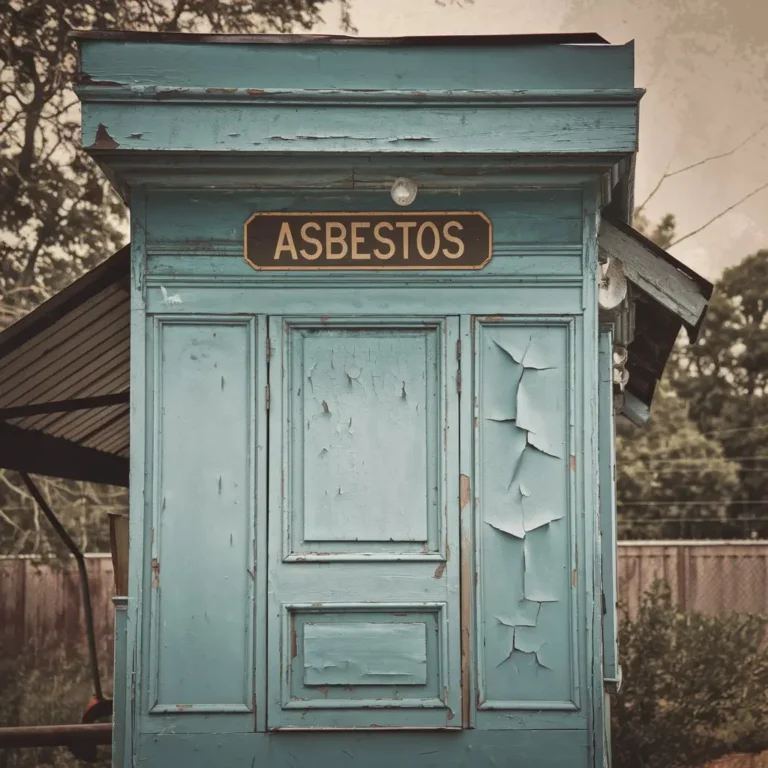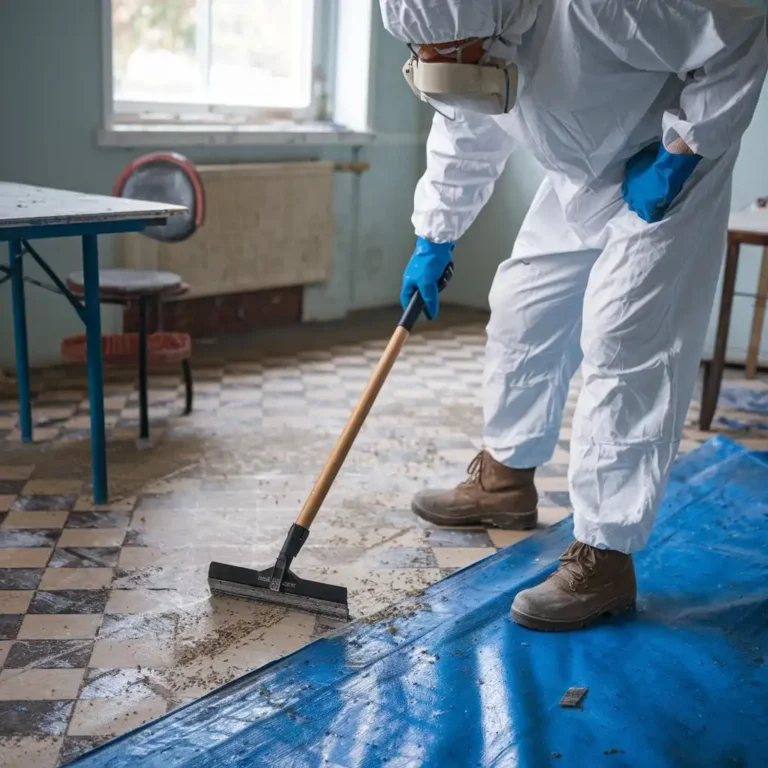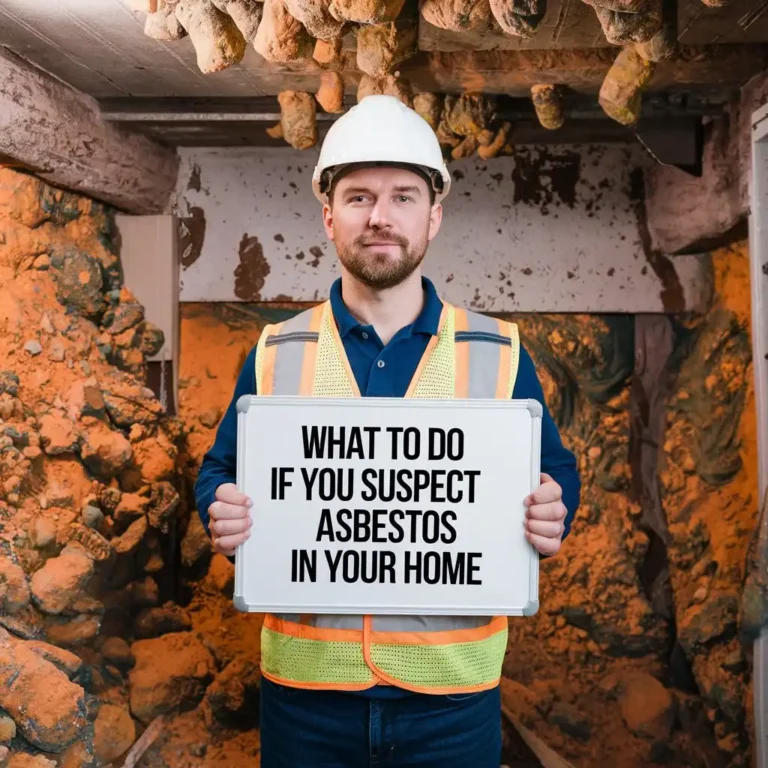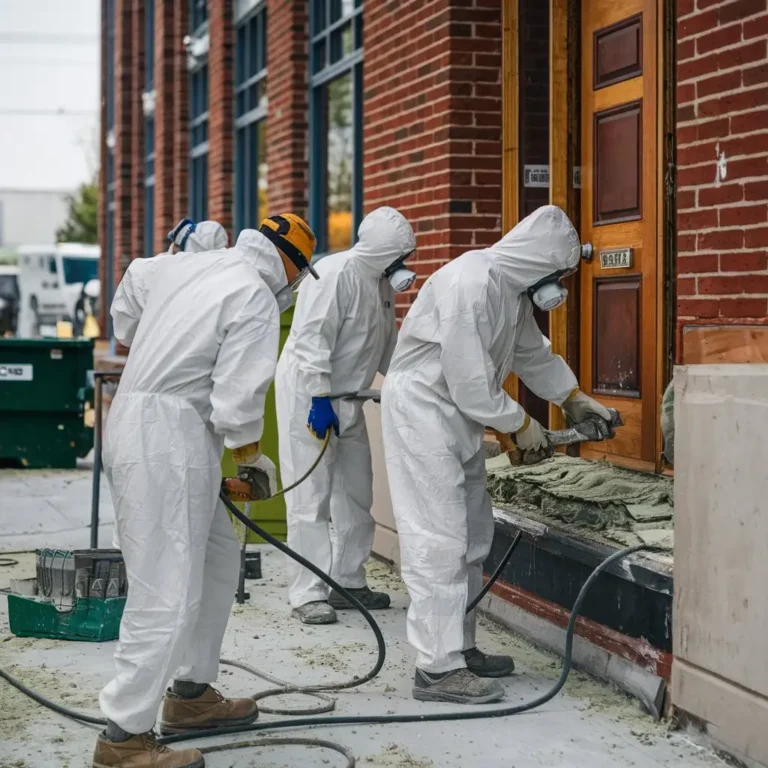Asbestos Monitoring Methods
Asbestos monitoring is essential for maintaining safe environments in areas where asbestos is present, either during removal processes or ongoing exposure risks. The primary goal is to ensure that any asbestos fibers released into the air are kept within safe levels. This guide will cover all aspects of asbestos monitoring, from its importance to best practices and different methods used.
What Is Asbestos Monitoring?
Asbestos monitoring refers to the continuous process of detecting and measuring the levels of asbestos fibers in the air or materials within a space. This is crucial in situations where asbestos may be disturbed, such as during construction, demolition, or asbestos removal activities. By using advanced tools and techniques, asbestos monitoring ensures that fiber concentrations stay within legal safety limits, protecting workers and residents.
Purpose of Asbestos Monitoring
The primary aim of asbestos monitoring is to assess potential exposure to airborne asbestos fibers. Continuous monitoring is especially necessary during demolition or renovation in buildings with asbestos-containing materials (ACMs). It helps identify when the air quality has become unsafe and protects individuals from harmful asbestos exposure.
Why Is Asbestos Monitoring Important?
Monitoring for asbestos is crucial for several reasons, including health protection, regulatory compliance, and maintaining workplace safety. Below are some of the key benefits of asbestos monitoring:
1. Health Protection
Exposure to asbestos fibers can cause serious diseases like mesothelioma, asbestosis, and lung cancer. Continuous monitoring helps detect dangerous levels of asbestos in the air, preventing individuals from inhaling these harmful fibers.
2. Compliance with Legal Standards
Various regulations set by organizations such as the Environmental Protection Agency (EPA) and Occupational Safety and Health Administration (OSHA) require regular asbestos monitoring in workplaces and homes that may contain asbestos. Non-compliance can result in fines, lawsuits, and health risks.
3. Ensuring Safe Environments
Proper asbestos monitoring ensures that areas undergoing renovation or demolition remain safe for workers and others in the vicinity. When asbestos levels are too high, immediate action can be taken to reduce the exposure, such as halting work or improving ventilation.
How Does Asbestos Monitoring Work?
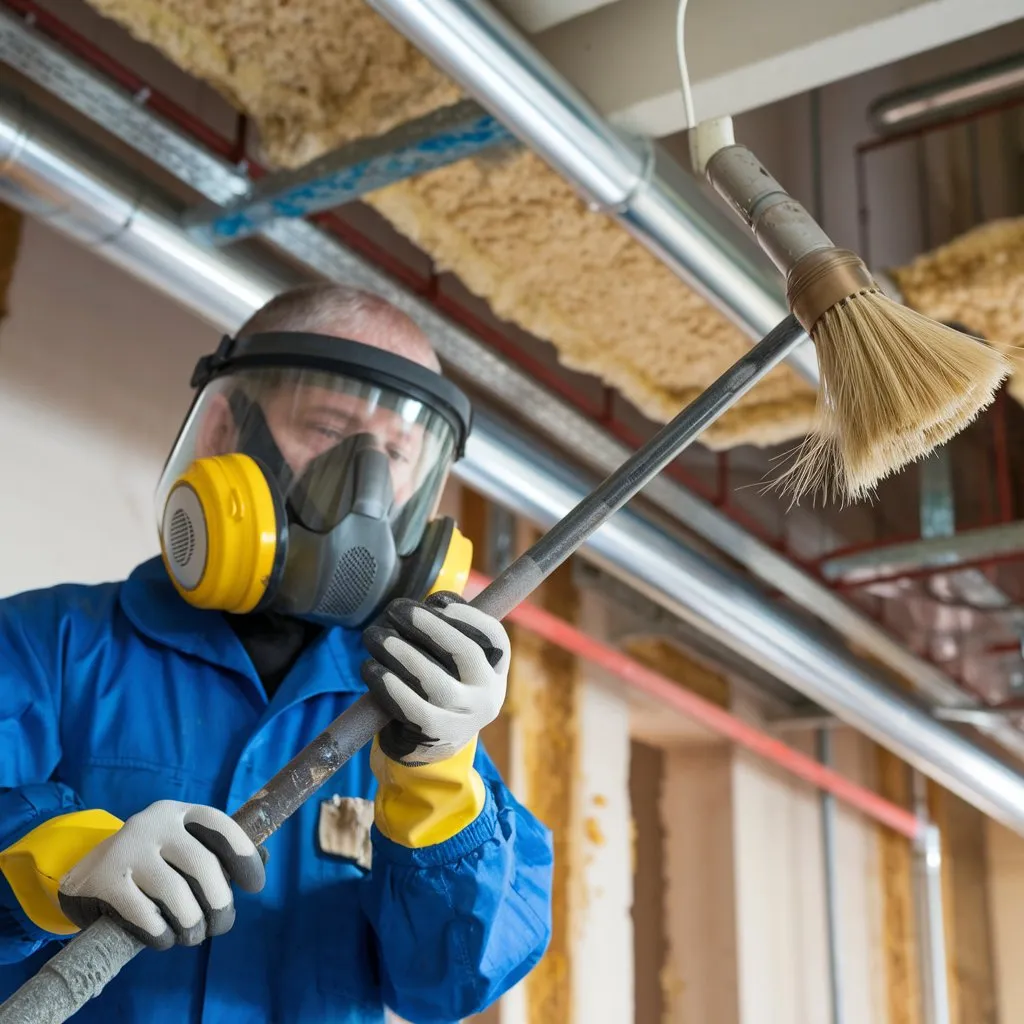
Asbestos monitoring involves a systematic process of collecting air samples, analyzing them for asbestos fiber concentrations, and determining whether those levels are safe. Here’s how it works:
1. Air Sampling
Air samples are collected using specialized pumps that draw air through filters. These samples are then analyzed to determine the concentration of asbestos fibers. Sampling can occur at various points within a space to ensure the entire area is monitored for airborne fibers.
2. Sample Analysis
After collecting samples, they are sent to a certified laboratory for analysis. Common methods include:
- Phase Contrast Microscopy (PCM): This method provides quick results and is typically used for general asbestos fiber counting.
- Transmission Electron Microscopy (TEM): This is a more advanced method that allows for a detailed examination of asbestos fibers, including differentiating fiber types.
3. Results Interpretation
Once the samples are analyzed, the results are compared to safe exposure limits. If the asbestos fiber levels exceed these limits, appropriate measures (such as halting work or improving containment measures) are taken to ensure safety.
Best Practices for Asbestos Air Monitoring
When conducting asbestos air monitoring, following best practices ensures that results are accurate, and all safety measures are met. Here are some essential guidelines:
1. Pre-Work Air Quality Testing
Before starting any asbestos removal or abatement project, it’s vital to perform a baseline air quality test. This gives you a reference point to measure changes in air quality throughout the work process.
2. Continuous Monitoring During Abatement
During asbestos removal, continuous air monitoring is recommended to detect any spikes in airborne asbestos fibers. Real-time monitoring can trigger immediate interventions if fiber levels exceed safe thresholds.
3. Post-Work Air Testing
After the removal or disturbance of asbestos, perform air quality testing again to ensure that the space is safe for re-entry. Post-work testing provides assurance that the area has been properly cleaned and is safe for occupancy.
4. Use of Certified Professionals
Only certified and experienced professionals should conduct asbestos air monitoring. These specialists are trained in using monitoring equipment correctly and interpreting results accurately.
5. Documentation and Record-Keeping
Maintaining thorough records of air monitoring results and actions taken ensures compliance with safety regulations and provides valuable documentation in case of future disputes or inspections.
Types of Asbestos Monitoring
Asbestos monitoring can take various forms, each suited to specific needs and environments. The most common types of monitoring include:
1. Airborne Fiber Monitoring
Airborne fiber monitoring is essential during asbestos removal, renovations, or any activity likely to disturb asbestos-containing materials. This method uses pumps and filters to collect air samples, which are analyzed for asbestos content.
2. Surface Monitoring
Surface monitoring is used to check for visible asbestos particles that may have settled on surfaces like floors, furniture, or equipment. This method helps ensure that no traces of asbestos remain after the removal process.
3. Personal Monitoring
Personal monitoring involves workers wearing a portable sampling device that collects air samples as they move around the worksite. This helps assess individual exposure to asbestos fibers, ensuring that workers are not exposed to harmful levels.
4. Visual Inspection and Monitoring
Visual monitoring includes regular inspections of areas that may have asbestos, checking for signs of damage or disturbance. This is an informal method but important for identifying situations where further asbestos testing may be needed.
Asbestos Air Monitoring Equipment
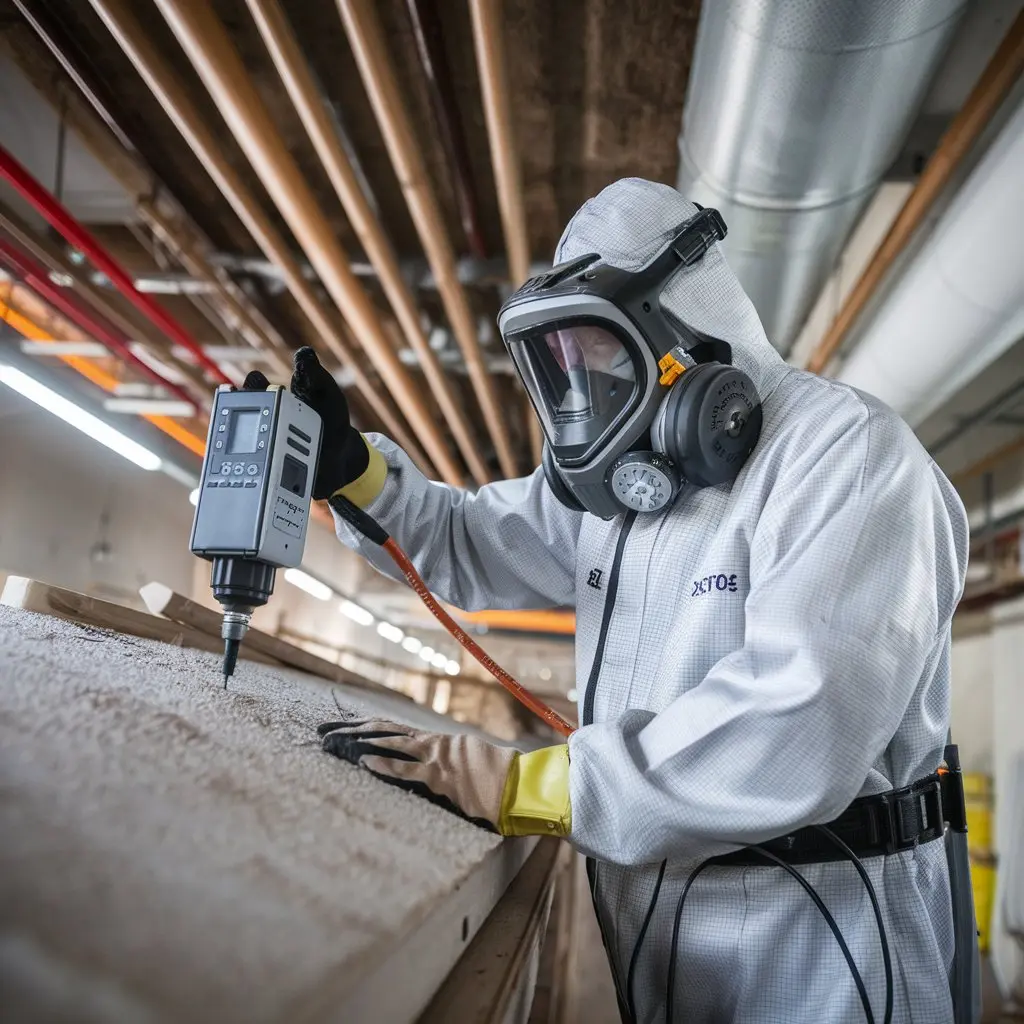
Several specialized tools and devices are used for effective asbestos monitoring. These instruments are designed to collect samples and provide accurate data on asbestos fiber concentration in the air. Some of the most common equipment includes:
1. Air Sampling Pumps
These pumps are essential for collecting air samples by drawing air through filters. They are used to collect samples in various environments, including homes, workplaces, and construction sites.
2. Real-Time Monitors
Real-time asbestos monitors provide immediate feedback on air quality. They offer continuous readings of airborne asbestos levels, allowing immediate action if fiber concentrations exceed the permissible limits.
3. Microscopes for Analysis
After air samples are collected, they are analyzed under microscopes, such as Phase Contrast Microscopy (PCM) or Transmission Electron Microscopy (TEM). These tools allow technicians to accurately count and identify asbestos fibers.
4. Collection Filters and Media
Filters are used in air sampling devices to capture asbestos fibers from the air. These filters must be capable of retaining even the smallest fibers to ensure accurate results.
Who Is Responsible for Asbestos Monitoring?
Asbestos monitoring is generally the responsibility of the property owner, contractor, or employer. However, it can vary depending on the situation:
1. Employers
In workplaces, especially in industries where asbestos may be present (e.g., construction, manufacturing), employers are required to ensure that asbestos monitoring is conducted to protect the health of workers.
2. Property Owners
Property owners are responsible for monitoring asbestos levels if their building contains asbestos materials that may be disturbed. This includes ensuring proper air testing during any renovation or demolition work.
3. Asbestos Abatement Contractors
Certified asbestos abatement contractors are responsible for carrying out asbestos removal and air monitoring. They are required to follow strict regulations and ensure safe levels of exposure during the removal process.
Common Questions About Asbestos Monitoring
1. How Often Should Asbestos Monitoring Be Done?
Asbestos monitoring should be conducted before, during, and after any activity that may disturb asbestos materials. Continuous monitoring is essential during asbestos removal, while post-work testing ensures safe air quality before occupancy.
2. What Are the Safe Limits for Asbestos Exposure?
OSHA standards set the permissible exposure limit for asbestos at 0.1 fibers per cubic centimeter of air for an 8-hour workday. If levels exceed this limit, corrective actions must be taken immediately.
3. Can Asbestos Monitoring Detect All Types of Asbestos?
Yes, asbestos monitoring can detect all types of asbestos fibers, including chrysotile, amosite, and crocidolite. Different methods are used to identify and quantify the fibers accurately.
4. Can I Perform Asbestos Monitoring Myself?
Asbestos monitoring should be conducted by certified professionals. Handling asbestos without proper training and equipment can be dangerous and lead to health risks.
Conclusion
Asbestos monitoring is a vital part of managing environments where asbestos is present or being disturbed. By using the correct equipment, following best practices, and ensuring continuous monitoring, you can protect the health of workers, residents, and visitors. Whether it’s during construction, renovation, or asbestos removal, monitoring ensures compliance with safety standards and provides peace of mind that asbestos fibers are being managed effectively.
